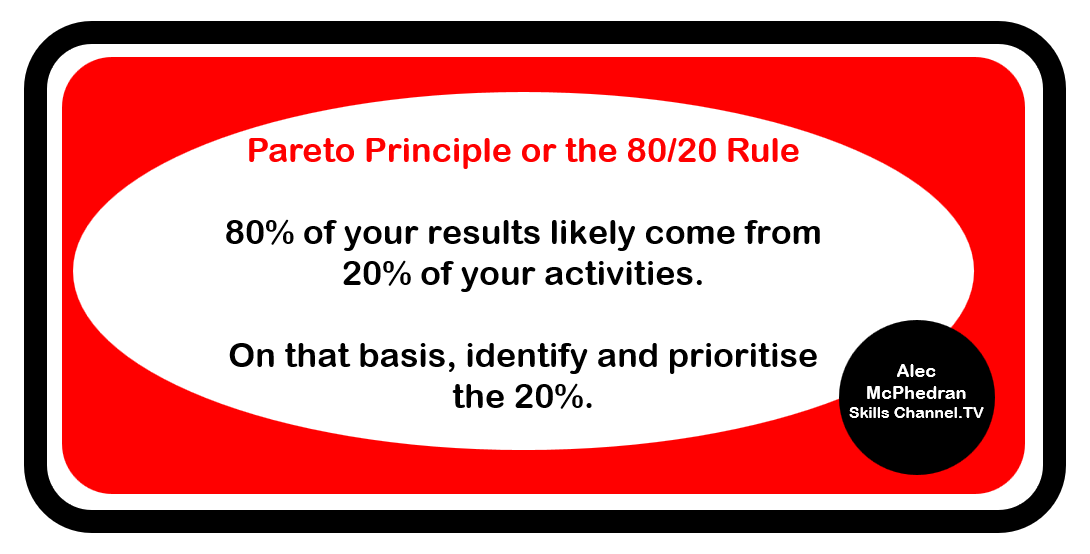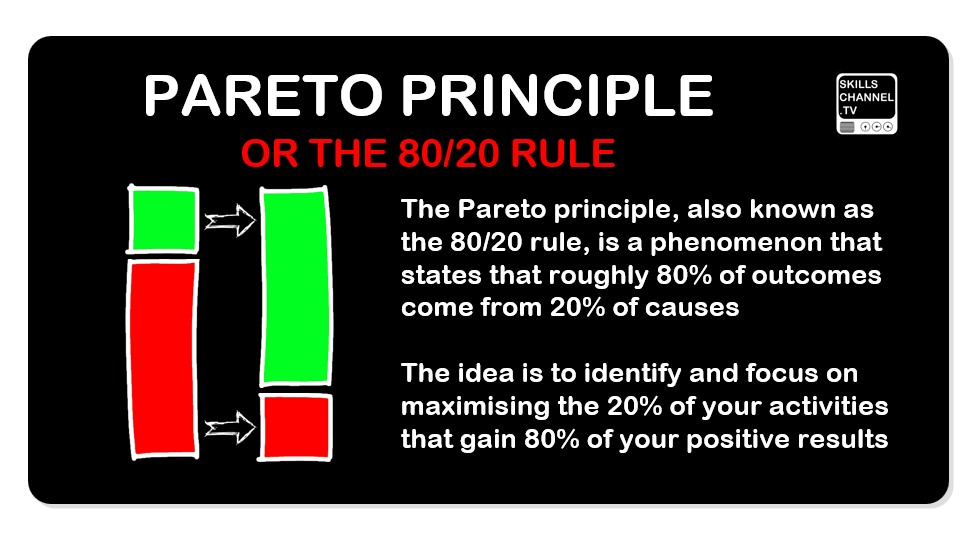|
An Overview of the Pareto Principle
Do you know what contributes to your successes or your results? If you do know, how well therefore do you plan and prioritise those as key actions to be completed or areas to focus on? Understanding the Pareto Principle is a great planning tool to help you focus on the important things. Here, creative sector coach and trainer Alec McPhedran of Skills Channel TV, shares his thoughts on the Pareto Principle. The Pareto Principle, also known as the 80/20 rule or the law of the vital few, states that roughly 80% of the effects or results come from 20% of the causes or inputs. This principle is named after the Italian economist Vilfredo Pareto, who observed in 1895 that approximately 80% of Italy's land was owned by 20% of the population. Since Pareto’s findings, academics have applied Pareto’s 80/20 rule of cause and effect, also known as the Pareto principle, to a variety of situations outside of wealth distribution, including business principles, planning and professional development. It highlights the imbalanced distribution of outcomes, suggesting that a significant majority of the outcomes are driven by a relatively small portion of the inputs. For example, in business, the Pareto Principle implies that roughly 80% of a company's profits come from 20% of its customers, services or products. In project management, it suggests that 80% of the project's results are achieved through 20% of the effort and resources invested. In personal productivity, it implies that 80% of your results come from 20% of activities or tasks. It's important to note that the specific ratio of 80/20 is not always exact and can vary. It serves as a general guideline rather than a rigid rule. The key insight is that a small portion of the causes or inputs have a disproportionately significant impact on the outcomes. Specific highlights are:
Examples of the 80/20 Rule
By recognising and applying the Pareto Principle, individuals and organizations can focus their efforts and resources on the critical few aspects that generate the majority of the desired results. This approach allows for more efficient allocation of time, energy, and resources, leading to increased productivity and effectiveness. How do I use the Pareto Principle? To effectively use the Pareto Principle, also known as the 80/20 rule, in your personal or professional life, you could follow these steps:
By applying the Pareto Principle, you can optimize your efforts, resources, and decision-making to achieve more significant results with less wasted time and resources. Alec McPhedran Chtd Fellow CIPD, Chtd Mngr CMI, MAC, MCMI is the managing director of Skills Channel TV, a training company for talented creative people. He specialises in one to one coaching, facilitated learning, media training and team development. For further information, contact 0121 366 87 99 or visit www.skillschannel.tv. Copyright © Alec McPhedran 2023
0 Comments
|
AuthorA trainer, coach and facilitator helping people acheive. Archives
November 2023
Categories
All
|


 RSS Feed
RSS Feed
